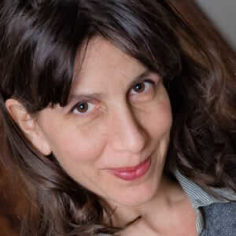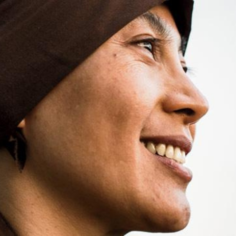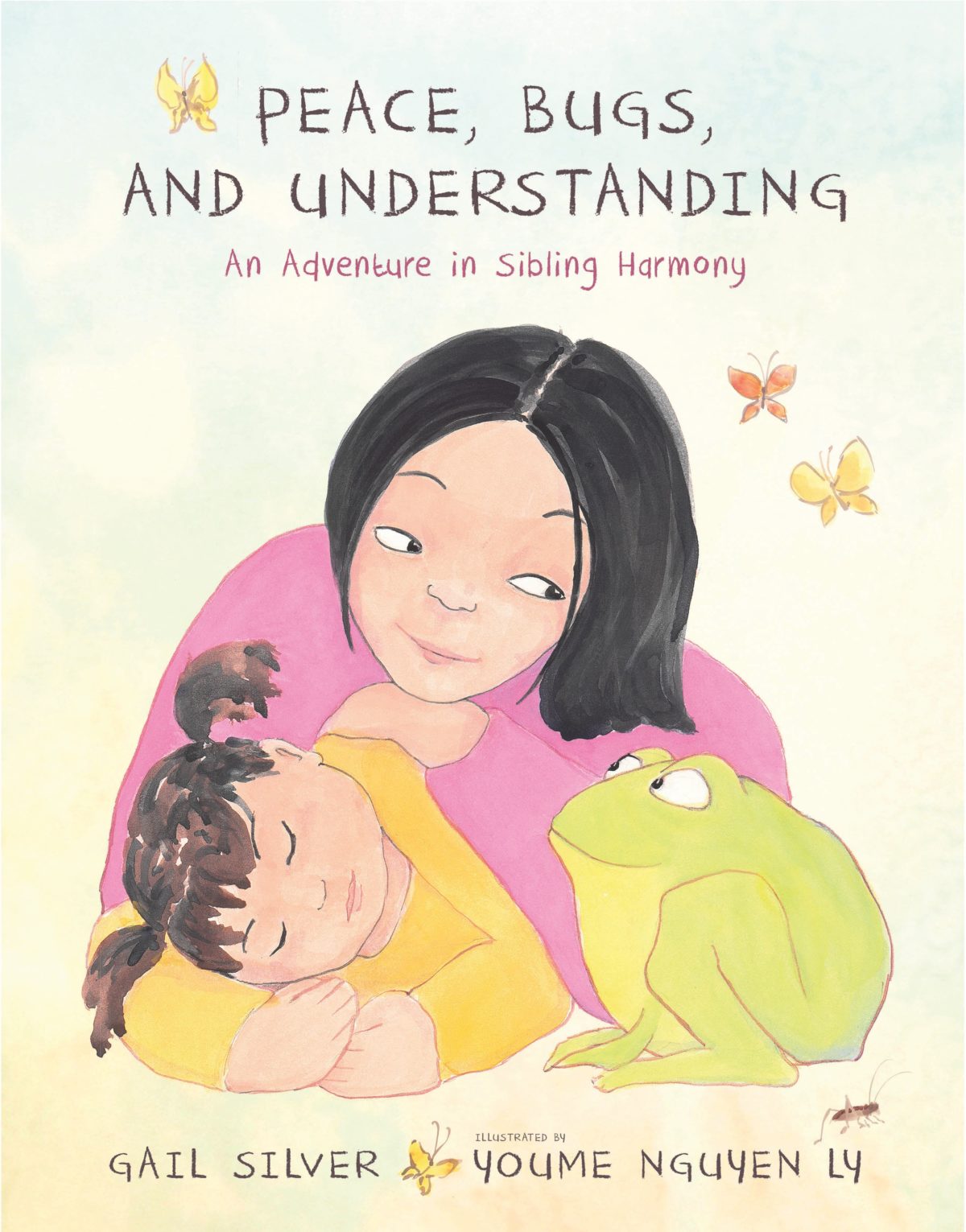
Peace, Bugs, and Understanding
An Adventure in Sibling Harmony
by Gail Silver
Plum Blossom Books, 2014
Hardcover, 48 pages
Reviewed by Lennis Lyon, True Silent Forest
While driving, I spotted a young fawn that had recently been killed by a car. Immediately, I began silently repeating, “May you be peaceful,” and added for its mother, “May you be healed.” The ancient teaching of sending wishes for happiness to others (or to oneself) is called metta.

Peace, Bugs, and Understanding
An Adventure in Sibling Harmony
by Gail Silver
Plum Blossom Books, 2014
Hardcover, 48 pages
Reviewed by Lennis Lyon, True Silent Forest
While driving, I spotted a young fawn that had recently been killed by a car. Immediately, I began silently repeating, “May you be peaceful,” and added for its mother, “May you be healed.” The ancient teaching of sending wishes for happiness to others (or to oneself) is called metta. “Metta” translates from Pali as “loving kindness” and is a powerful practice to transform difficult emotions.
The practice of metta is now readily accessible to children in Peace, Bugs, and Understanding, the third in Gail Silver’s series of books on transforming anger. We meet Lily, who loses her temper and pushes her little sister for destroying a game of checkers. When their father comes to the little sister’s aid, Lily’s feelings of anger and hurt intensify. There is a source of solace, though, when Lily discovers a journal from her great-grandfather, Lanh. As a boy, Lanh is also angry with a younger sister. Lanh’s anger materializes as an oversized and most annoying frog. “Anger,” Lanh finally says, “you’re getting heavy and I don’t feel so good. There must be something I can do to get you off my back.” The answer unfolds as Lanh naturally discovers loving kindness and readers witness its power to restore tenderness.
The words are nestled among colorful, expressive illustrations that transport the reader deep into the story. Youme Nguyen Ly, the illustrator, captures children’s feelings. I would purchase this book just to see the way Ly can make a pair of eyes tell the story.
I read the book to my eight-year-old grandson and asked how he liked the story. Mateus replied, “I like it. I like that great-grandfather protected the insect. I like the lesson that when we are angry, we can breathe in and out and meditate.” Mateus was happy that Lily used the words learned from her great-grandfather to speak to her little sister: “May you be happy. May you be safe. May you be strong. May you live with peace.”
The first book of the series, Anh’s Anger, teaches mindful breathing; the second, Steps and Stones, teaches mindful walking; and this third book adds the practice of loving kindness. As Thich Nhat Hanh has written, “The Anh’s Anger books are wonderful gifts for both children and adults who want to learn how to change unhappy situations into joyful ones.”
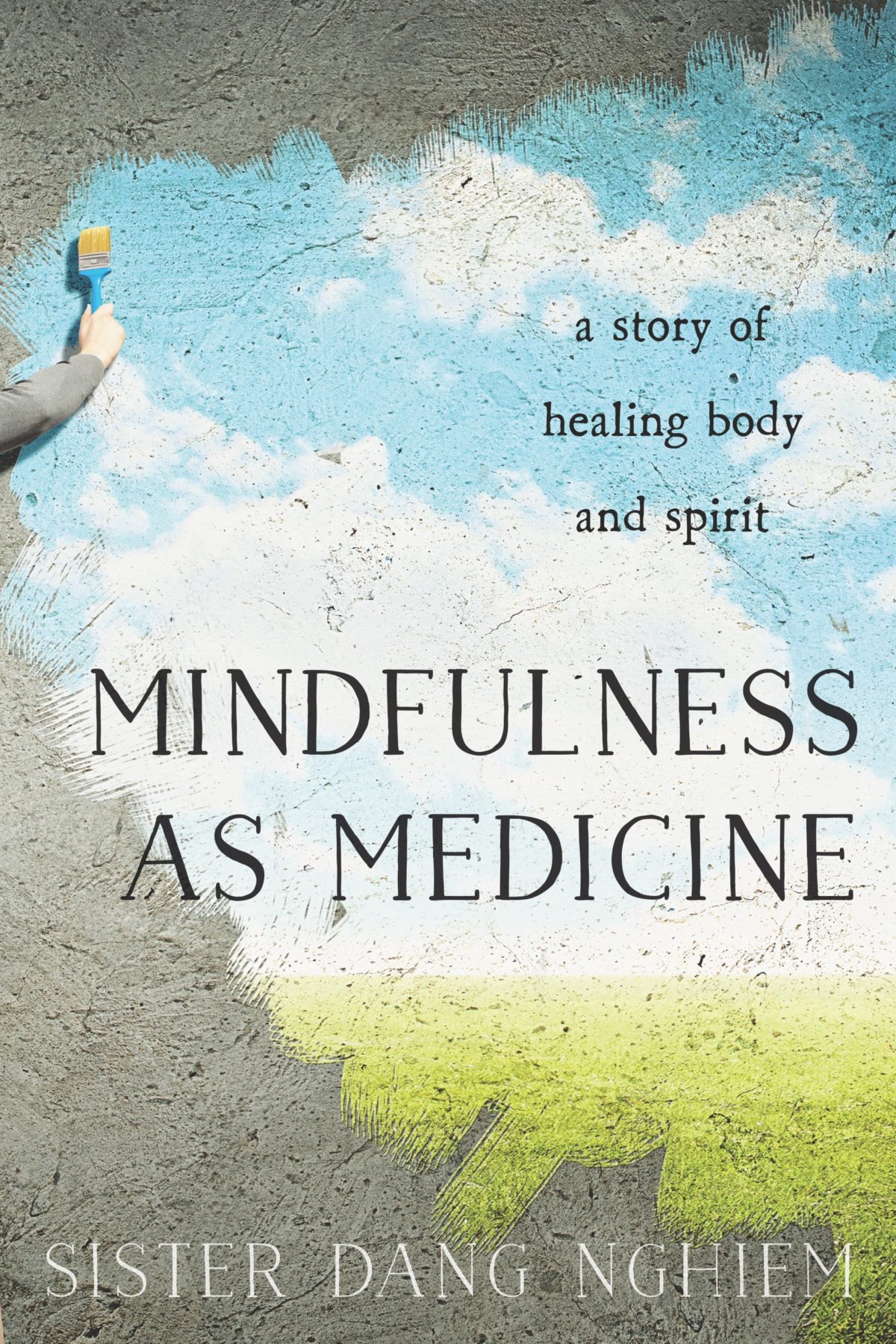
Mindfulness as Medicine
A Story of Healing Body and Spirit
by Sister Dang Nghiem
Parallax Press, 2015
Softcover, 352 pages
Reviewed by David Percival
Dear Sister Dang Nghiem,
This is supposed to be a book review, but it’s turning into a personal letter, as though I’m writing to my own sister. Thank you for this love letter to all of us. Thank you for your honesty and integrity and for allowing us into your life. Thank you for showing us the real meaning of interbeing. The love you have for all beings shows on every page, and most importantly, you beautifully explain the love you show for yourself and the importance of loving and taking care of ourselves.
The interbeing nature of suffering and happiness has never been made so clear than in this intimate and powerful look at your life, your suffering, your joy and healing. Like the interbeing story of the rock and the oak tree with which you begin the book, you pull me into your life and there is no separation. Your life is an inspiration. You are in me and I am in you. I feel your suffering in every molecule in my body even though we have never met.
Your book is skillfully organized around the Buddha’s great teaching of the Four Immeasurable Minds of Love, which you reinterpret as maitri (friendship), karuna (healing), mudita (joy), and upeksha (interbeing); and you include two added recently by Thay, trust/confidence and reverence. Interwoven throughout the book are stories from your life and your personal mindfulness practice.
Your ability to take care of yourself, transform your suffering, and live with joy is the great medicine you offer us. As you say, “Mindfulness is the most profound medicine that I can apply in my daily life.” This is a deep, personal look at the healing qualities of mindfulness in your life, a life that has had more than its share of suffering and struggle.
Your book is an expression of great joy, the work of a true teacher. You are a teacher who is not afraid to reveal the most intimate details of your life. You teach us that by looking deeply, embracing our suffering, and taking care of ourselves, we all have the capacity to heal, to help others, and to offer them our love and compassion. Although you write much about death, your beautiful book is a marvelous celebration of life.
With gratitude,
A humble book reviewer
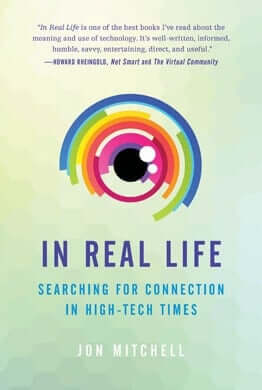
In Real Life
Searching for Connection in High-Tech Times
by Jon Mitchell
Parallax Press, 2015
Paperback, 224 pages
Reviewed by Juan Soberanis
In today’s times of highly connected devices and social media, it’s easy to become distracted from the present moment and disconnected from those around us. Jon Mitchell’s In Real Life takes a close look at how we use technology, how it uses us, and what we can do to remain genuinely connected by embracing technology with mindfulness and awareness.
Having been immersed in the world of blogging and social media, Mitchell takes readers on a journey of insight tempered by real-world experience. What emerges is a middle way for integrating technology into our lives. At one extreme are fear, loathing, and rejection of technology. At the other extreme are infatuation and over-focus. Mitchell’s middle way relies on mindfulness and awareness to ensure technology is used as a benevolent, nurturing force.
A blend of spirituality, philosophy, and metaphysics, In Real Life is thought-provoking as it explores both the positive and dangerous potential of existing and emerging technology. Although it diverges from the main thesis at times, when it touches on matters of the heart—the need for connection and love—it inspires hope and a sense of urgency to practice in a new and disciplined manner with respect to technology. Readers are reminded that technology itself doesn’t provide meaning and purpose but can be used as a means to find fulfillment, especially for those whose livelihoods depend on it.
In addition to encouraging a rejuvenated discipline, one of the most important takeaways from the book is insight into the inner workings of social media. Mitchell pulls the curtain back on today’s wizards of social media platforms, exposing their intentions and tactics to gain more and more of our attention. He asserts that our attention is their profit driver and recommends techniques to remain mindful while we use apps, ranging from turning off distracting notifications to generating empathy while responding to posts. He explains how, through mindfulness, we can become actors rather than reactors when it comes to giving our attention away. Mitchell empowers readers to use technology rather than be used by it.
In Real Life is a call to actively take care of ourselves rather than risk becoming victims of our own progress. The underlying theme is a message encouraging readers to deeply question the why of it all and, in search of the answer, to discover a nurturing approach to integrating technology into our daily lives.
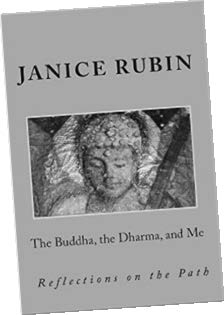
The Buddha, the Dharma, and Me
Reflections on the Path
by Janice Rubin
Grimalkin Press, 2014
Paperback, 178 pages
Reviewed by Sandra Diaz
Author and Sangha leader Janice Rubin uses humor to impart her life’s wisdom in The Buddha, the Dharma, and Me: Reflections on the Path. Rubin reveals the insight she has found through various practices taught by the Buddha and Thich Nhat Hanh. With straightforward language and courage, she shares stories of childhood trauma, marriage, her career path, and her evolution as a Sangha leader. Rubin writes candidly about struggles, including her bouts of depression and the suicide of her daughter. She also shares her personal practice of meditation, which includes a formal practice of loving kindness and an informal practice of mindfulness throughout the day. She explains, “I began to understand that whenever I was fully invested in whatever it was I was doing, I was meditating.”
Interdependence and interbeing have become a path by which Rubin lovingly forgives her parents for their imperfections. She acknowledges, “I am my father’s love of learning, his skeptical mind, and possibly a smidgen of his narcissism.” In a similar fashion, she weaves in personal stories to explain the Five Contemplations before Eating and the Five Remembrances, and to show how they can alleviate suffering. On the Five Mindfulness Trainings, Rubin comments, “It was important for me to keep in mind that taking these trainings seriously was not an invitation to perfection. ... It’s only when we mess up and meditate on the possible reasons for behaving as we did, that we may learn about who we are and why we do the things we do when we are not mindful.”
Rubin relates Buddhist teachings and practices to larger societal themes. Having witnessed segregation and participated in the nascent civil rights movement as a teenager, Rubin reflects on the degrading realities of racism and the positive changes that can be made through peaceful resistance. She calls us to live as “examplars of the peace, freedom, and love we may all enjoy when we open our hearts and our arms to all human beings.”
Best read as a series of essays, The Buddha, the Dharma, and Me shows how one woman has been able to bring more peace to her life with dedication and persistence, using the tools that Buddhism provides and inspiring hope in others who seek to do the same.
